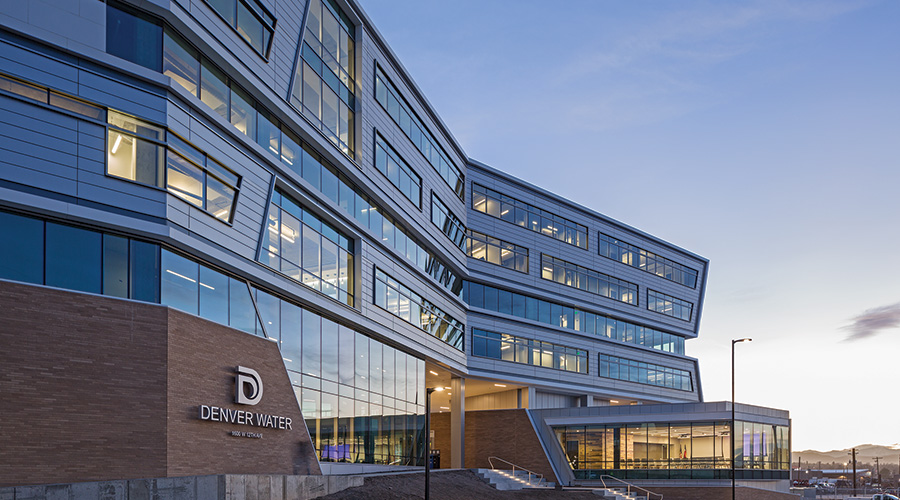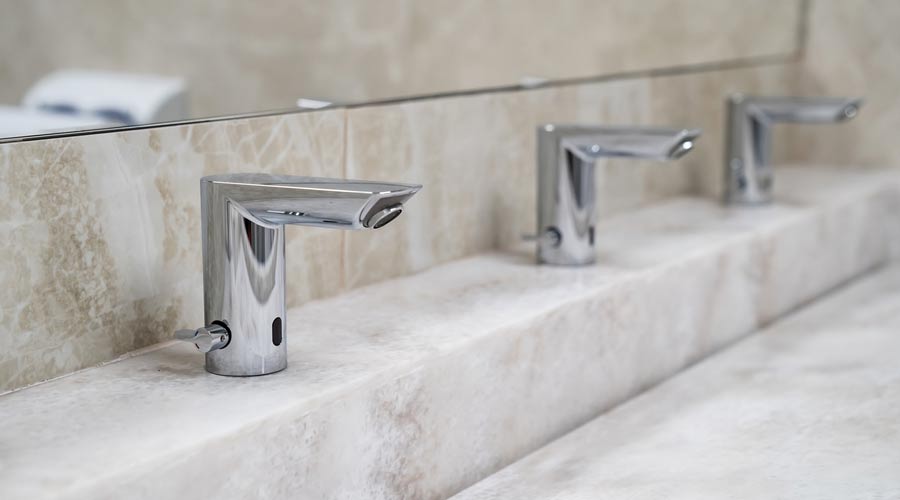Managers Speak Out on Water Conservation Efforts
By Dave Lubach, Associate Editor
This Roundtable Features:
Paul Young, Principal Engineer and Head of Facility Maintenance, County of Ventura, Calif.
Delmy Emerson, Director of Buildings and Grounds, California Institute of Technology, Pasadena, Calif.
Todd Wilkening, Director of Facilities, Ridgeview Medical Center, Waconia, Minn.
Monitoring water use is a high priority for maintenance and engineering managers, whether it involves measuring the amount consumed irrigating landscapes or the amount that flows through plumbing systems. In this roundtable, three managers discuss their successful efforts to conserve water in their facilities.
Where does water conservation rank on your department's priority list?
Young: Water conservation ranks relatively high on our priority list. Our water and sewer budget is just over $800,000, so it is important that we immediately respond to leaking water fixtures and broken sprinklers and implement water-conservation measures where feasible.
Emerson: We look at sustainability from a holistic approach on campus. It is difficult to rank some of the conservation efforts, but water conservation is certainly a top priority because of the increasing scarcity and cost of water, especially in the Southern California area.
How difficult is it to balance the appearance of the landscape with the need to lower water costs?
Young: Our county government center campus has a lot of landscaped area and huge expanses of lawn, which are healthy and well maintained. It gives the impression that we are well-off. The reality is that we are fortunate to have a well that is in a large non-potable aquifer that we use to irrigate the campus. Since the water is of poor quality, we need to monitor how we use it, but we are able to keep this campus looking good. We also have sites where we contract for the landscaping maintenance. The buildings are in a business park, and we have to comply with the business park association's requirements and have (as a result) less control over the irrigation. There, we have to be diligent at tracking the water use.
EMERSON: It's challenging, to be really honest. However, the planning and designing approach we have with the goal of water conservation we have in mind allows us to make the changes less challenging. When it comes to landscaping, though, it is extremely visible. If you make a change, people really notice it. Therefore, we have gone to our campus population as to why we're making the changes.
Wilkening: Our construction specifications include language regarding the use of native plantings, which are drought-resistant. In addition to lower maintenance costs, native plantings often have a lower first cost, as they can be purchased locally. However, we do choose more ornamental plantings in choice locations, which does increase the need for water. Currently, rainwater-collection systems are being explored as a substitute to municipal water sources.
What strategies have been most successful for conserving water?
Young: Outside our buildings, our strategy has been to water at night and install mulch to reduce evaporative losses; monitor the weather and turn off the irrigation before periods of rain; adjust flows to reduce the amount of applied water to areas that are mostly in the shade; use drought tolerant, native plants and drip irrigation systems; and regularly check and repair irrigation systems. Inside our buildings, our strategy has been to install low-flow fixtures wherever we can. We are replacing 3 gallons per flush (gpf) water closets with 1.28 gpf units and 1 gpf urinals with 0.25 gpf units. We also have standardized on-motion, sensor-operated, hands-free faucets, which use 0.5 gallons per minute. We know we have been successful at reducing water use because our costs have remained constant over the recent years, even though the cost per unit of water has increased. We also regularly meet with our cooling tower water treatment contractor and review reports on the cooling tower water chemistry to make sure the system is operating effectively.
Emerson: Outside of our significant reduction in landscape water use, the most successful water-reduction process on campus has actually been our energy-conservation projects because we have a central plant that produces electricity, heat and steam for our campus. About 60 percent of our water is consumed from the water to cool the equipment in the buildings. The more we save in electricity, the more we can reduce the load of the central plant, and the less water that we need to process the cooling process.
Wilkening: Our biggest success has been putting low-flow devices on sinks and showers and then also reclaiming condenser water off of air-handling units for make-up water on our cooling towers. We do have some rain gardens that collect water for some local plantings. Staff education is a huge piece of that. Another success is we've gotten rid of a lot of water-cooled appliances, such as ice machines and cooling equipment, and went to air-cooled. That's made a big difference.
How have advances in technology, such as submetering and irrigation control, contributed to water-conservation efforts?
Young: We utilize technology whenever it is cost-efficient. For instance, all of our facilities are submetered for irrigation water. We have a system to track water use. We control the irrigation at our government center and most of our other larger facilities using a computerized watering system that regulates the water based on evapotranspiration. Most of these facilities have a weather station on the roof. We are installing carbon filters on our drinking fountains in place of reverse-osmosis systems. Our Todd Road jail has a vacuum toilet system that uses about a half-gallon a flush. At our two jails, we installed a system that limits the inmates to two toilet flushes an hour. The result of all this is that we have achieved a reduction in water use of about 25 percent since 2005.
Emerson: Submetering is very critical to water conservation because you can not manage what you don't measure. We noticed that right away, and that's why we initiated a submetering program throughout our campus. Additionally, we do have a weather-based irrigation-control system on campus that has significantly reduced the water consumption on our campus grounds. We have a computerized system, and we have a weather station on campus that measures, and we have sensors throughout the area that measure all the precipitation and all the conditions.
Wilkening: We've done some submetering to get an understanding of how water is being utilized in our organization. Also, (with) moisture sensors on the lawns for irrigation, you no longer see our irrigation systems run during rainfalls.
What are the next steps you plan to take in your efforts to minimize water use?
Young: As the budget allows, we plan on expanding our computerized watering system to other facilities and upgrading the landscaping around several buildings to native, drought-tolerant plants. We have two large buildings that have 3 gpf water closets and are developing a plan to replace them with 1.28 gpf water closets by the end of 2013 using our in-house staff. Finally, at our Todd Road jail in Santa Paula, we are no longer watering lawn areas that are in the back of the facility that only the inmates see and (instead are) covering it with a weed barrier and rock. This will not only help with conserving water but will eliminate the landscape maintenance in that area.
Emerson: The next step is to continue identifying conservation opportunities, primarily in our central plant, with a focus on water recycling — in recapturing condensate to supply our campus recycling water network, which will feed irrigation in our new Leadership in Energy and Environmental Design (LEED) buildings.
Wilkening: Continue doing what we're doing and try to keep staff excited surrounding water conservation so they're paying attention to it. We are trying to figure out if we can use gray water for irrigation, as well. We've seen some pilot programs with that, and they've been pretty successful. It's frustrating to me that people use the term wastewater, because water is a source that's never ending. When we discharge water it goes on to another purpose or is reclaimed for another use. We need to educate society to not look at water as waste. We need to think when that resource goes down the drain, it's a really a loss we need to recapture and re-utilize. It's a mindset.
Related Topics:











